Horizontal Scaling vs. Vertical Scaling
How to Choose the Right Database Scaling Strategy
How to Choose the Right Database Scaling Strategy


Data-intensive applications generate and consume data at an unprecedented rate, placing immense pressure on underlying database scaling strategies. User expectations for performance and availability are higher than ever, demanding instantaneous results and seamless handling of fluctuating loads. Consequently, a database’s ability to scale—adjusting its capacity to meet demand—is a fundamental requirement for business success.
Effective scalability ensures applications remain responsive and efficient, preventing performance degradation, slow queries, user frustration, downtime, and lost revenue. Scalability includes both expansion (scale up vs. scale out) and contraction (scaling down or in) to optimize resources and reduce costs.
Organizations typically face two primary scaling strategies:
If your workloads are highly dynamic, require high availability, or need to handle millions of concurrent requests, horizontal scaling is likely the better fit. For simpler architectures or predictable growth, vertical scaling may offer short-term simplicity, even if it comes with hard limits.
Choose Vertical Scaling if:
|
Choose Horizontal Scaling if:
|
Choosing the right strategy impacts performance, cost, complexity, and long-term viability. Neither approach is universally superior; understanding their trade-offs is crucial for addressing current bottlenecks and ensuring sustainable growth. In the cloud era, cloud database scaling is linked to business agility and cost-efficiency, making this choice central to cloud architecture.
This guide explores both strategies, compares their strengths and weaknesses, examines the business drivers for scaling, and provides a modern solution leveraging horizontal scaling.
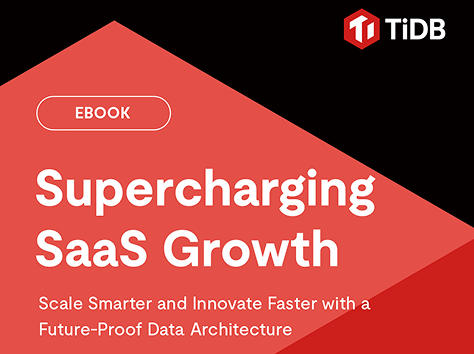
Horizontal scaling (“scaling out”) adds more machines (nodes or instances) to a resource pool and distributes the workload across them, like adding lanes to a highway.
Horizontal scaling uses a distributed architecture:
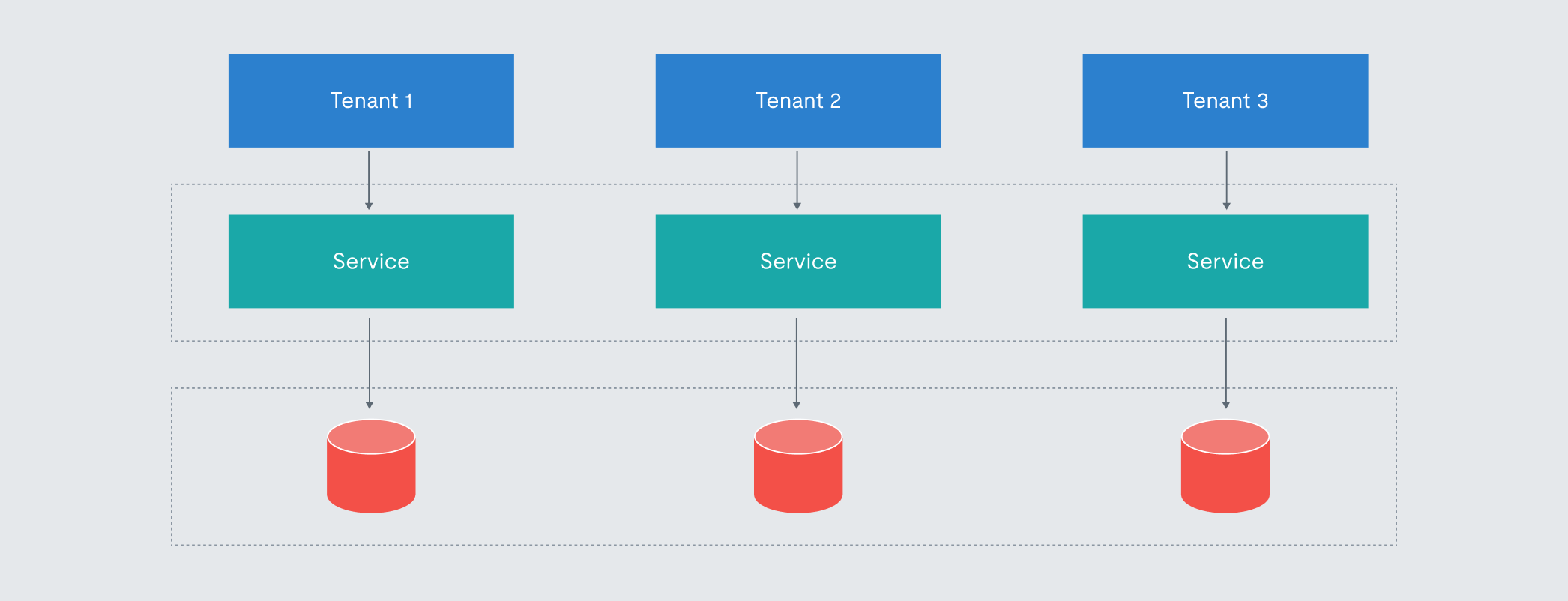
Figure 1. A representation of horizontal scaling in a typical multi-tenant SaaS architecture.
Implementation typically requires designing applications for a distributed environment.

Horizontal scaling dominates large-scale applications but requires careful planning and often specialized distributed database architecture.
Vertical scaling (“scaling up”) increases the capacity of an individual server by enhancing its resources, like upgrading a computer’s CPU, RAM, or storage. The goal is to make the existing machine more powerful to handle increased load without adding more servers.
Vertical scaling involves upgrading components on the same machine: CPU, RAM, storage, or network interfaces. In cloud environments, this usually means restarting the virtual machine on a larger instance type with more resources. The principle remains: enhance a single node.

Figure 2. A representation of vertical scaling in a typical SaaS application.
Vertical scaling can work for predictable growth and downtime tolerance but is problematic for large-scale, mission-critical systems due to its inherent limits.
Choosing between vertical and horizontal scaling involves trade-offs across key dimensions.
| Feature | Horizontal Scaling (Scale Out) | Vertical Scaling (Scale Up) |
| Scalability Limit | Theoretically limitless (add more nodes) | Hard hardware/instance ceiling |
| Primary Performance | Distributed load handling, high concurrency, parallel processing | Increased single-node power (CPU, RAM, I/O) |
| Cost Profile | Higher initial cost; Potentially lower TCO (commodity hardware, elasticity, reduced downtime) | Lower initial cost; High TCO at scale (premium hardware, downtime) |
| Implementation Complexity | More complex (requires distributed architecture/app changes) | Simpler (upgrade existing system) |
| Management Complexity | More complex (manage cluster, distribution, consistency) | Simpler (single node) |
| Reliability/Availability | Higher (Fault tolerant, no SPOF) | Lower (Single Point of Failure) |
| Downtime for Scaling | Minimal/Zero (add/remove nodes, rolling updates) | Required for upgrades/changes |
| Data Consistency Mgmt | Complex (across distributed nodes) | Simple (single node) |
| Elasticity | High (easy scale out/in, suitable for auto-scaling) | Low (scaling up/down often disruptive) |
Hybrid approaches exist, combining larger nodes within a horizontal architecture. The best approach depends on workload characteristics and requirements. Vertical scaling may suit predictable growth and downtime tolerance. Horizontal scaling is preferred for unpredictable workloads, high concurrency, microservices, and high availability needs, often requiring databases designed for distribution.
The need for database scaling strategies stems from tangible business problems caused by the inability to handle growing demands.
Addressing these pain points is critical, as poor scalability directly impacts revenue, productivity, reputation, and growth. A proactive approach to scaling, anticipating future needs, prevents costly emergency fixes and supports smoother growth.
While cloud bills and instance pricing are often the most visible costs of scaling, they’re far from the most expensive. Choosing the wrong scaling path—or delaying the right one—can introduce operational drag, engineering inefficiencies, and lost business opportunities. Here are four hidden costs every team should weigh when planning for growth:
Outages caused by vertical scaling limits or brittle sharding schemes don’t just hurt uptime SLAs. They damage user trust, derail internal roadmaps, and divert resources to firefighting.
Maintaining and working around systems that weren’t designed to scale horizontally drains developer productivity. Manual sharding, custom routing logic, and hand-stitched failover mechanisms all represent time engineers could spend building features—not fighting infrastructure.
Workarounds for scaling limitations often lead to fragmented infrastructure—multiple databases, duplicated monitoring stacks, and brittle deployment pipelines. This increases the surface area for bugs and makes it harder to enforce consistency, observability, and compliance.
The real cost of not scaling effectively? Missed market opportunities. Whether it’s delaying an international launch, avoiding a high-growth customer segment, or failing to capitalize on real-time analytics, slow scaling can limit your business model.
Traditional scaling limitations necessitate modern, inherently scalable solutions like TiDB.
TiDB is an open-source, distributed SQL database designed for horizontal scalability, strong consistency (ACID compliance via Raft), and high availability (automatic failover). It aims to combine the strengths of relational databases with NoSQL scalability.
TiDB provides SQL familiarity and strong consistency with massive horizontal scalability, automating the complexities of distributed data management.
For decades, horizontal scaling was considered the domain of NoSQL databases, while traditional SQL systems remained largely confined to single-node vertical scaling. This belief stemmed from the architectural complexity involved in preserving strong consistency, ACID compliance, and SQL semantics in distributed environments. As a result, many teams assumed they had to choose between scale and structure—either give up SQL’s expressive power or forgo elastic scale-out.
But data-intensive application demands have outgrown that trade-off.
From real-time financial transactions to large-scale SaaS workloads, today’s systems need both: the rigor of relational models and the elasticity of horizontal scaling. TiDB is purpose-built to meet that challenge. As a distributed SQL database, TiDB retains full MySQL compatibility while delivering native horizontal scalability, automatic data sharding, and strong consistency powered by the Raft consensus algorithm.
The result? You get the familiar power of SQL—joins, transactions, indexes—without the bottlenecks of monolithic infrastructure. TiDB makes horizontal scaling a reality for SQL workloads, empowering teams to scale predictably, simplify operations, and meet the performance demands of modern data-intensive systems.
TiDB’s horizontal scalability stems from its distributed architecture, separating compute and storage layers for independent scaling.
The cornerstone of TiDB’s scalability is the clear separation of its computing and storage layers. This allows each layer to be scaled independently based on specific workload demands, providing flexibility and optimizing resource utilization. This contrasts sharply with traditional databases where compute, storage, and transaction management are tightly integrated within a single system, often leading to bottlenecks and scaling limitations.
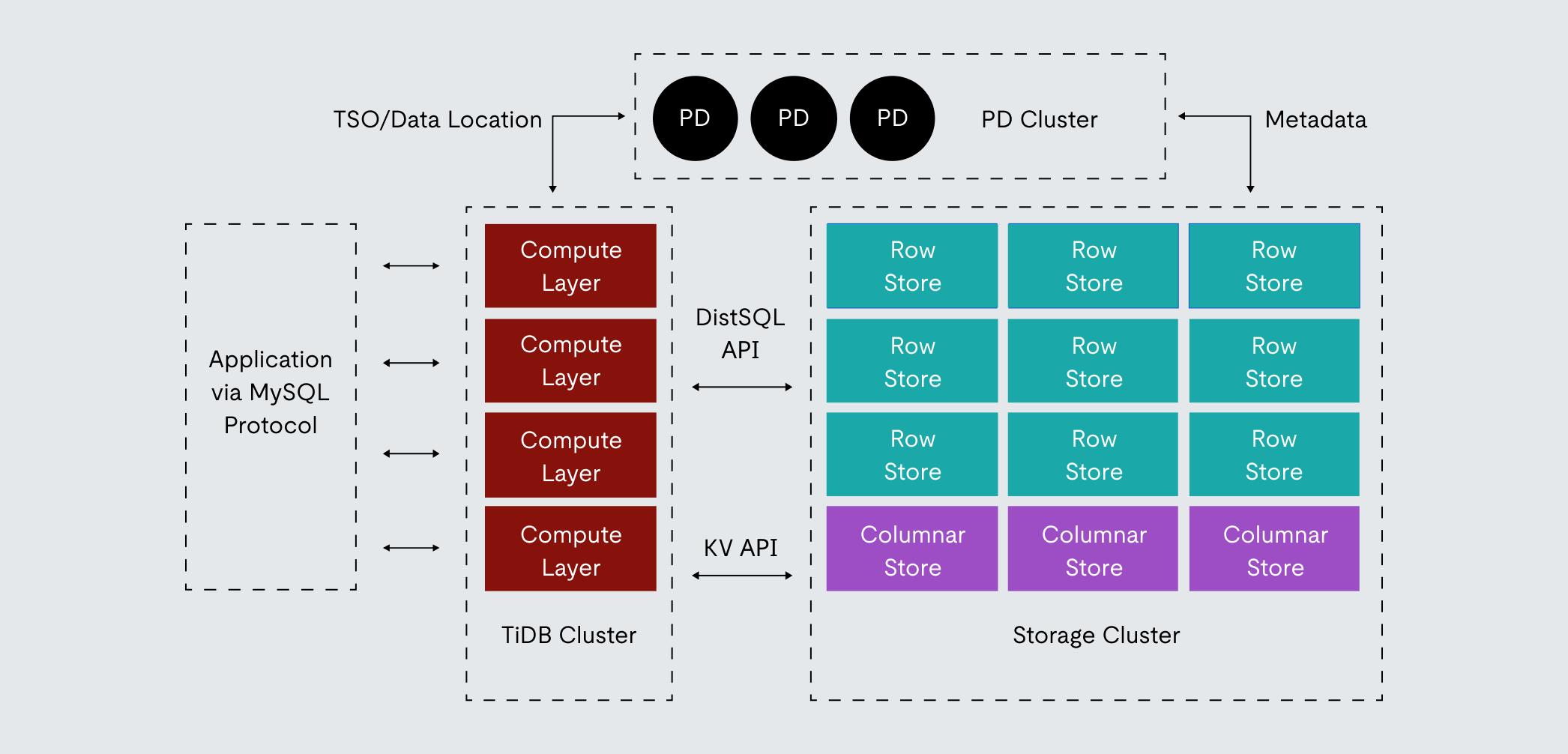
Figure 3. A diagram showing the various components that make up TiDB’s architecture.
The TiDB cluster comprises several key components working in concert:
Several core mechanisms underpin TiDB’s horizontal scalability:
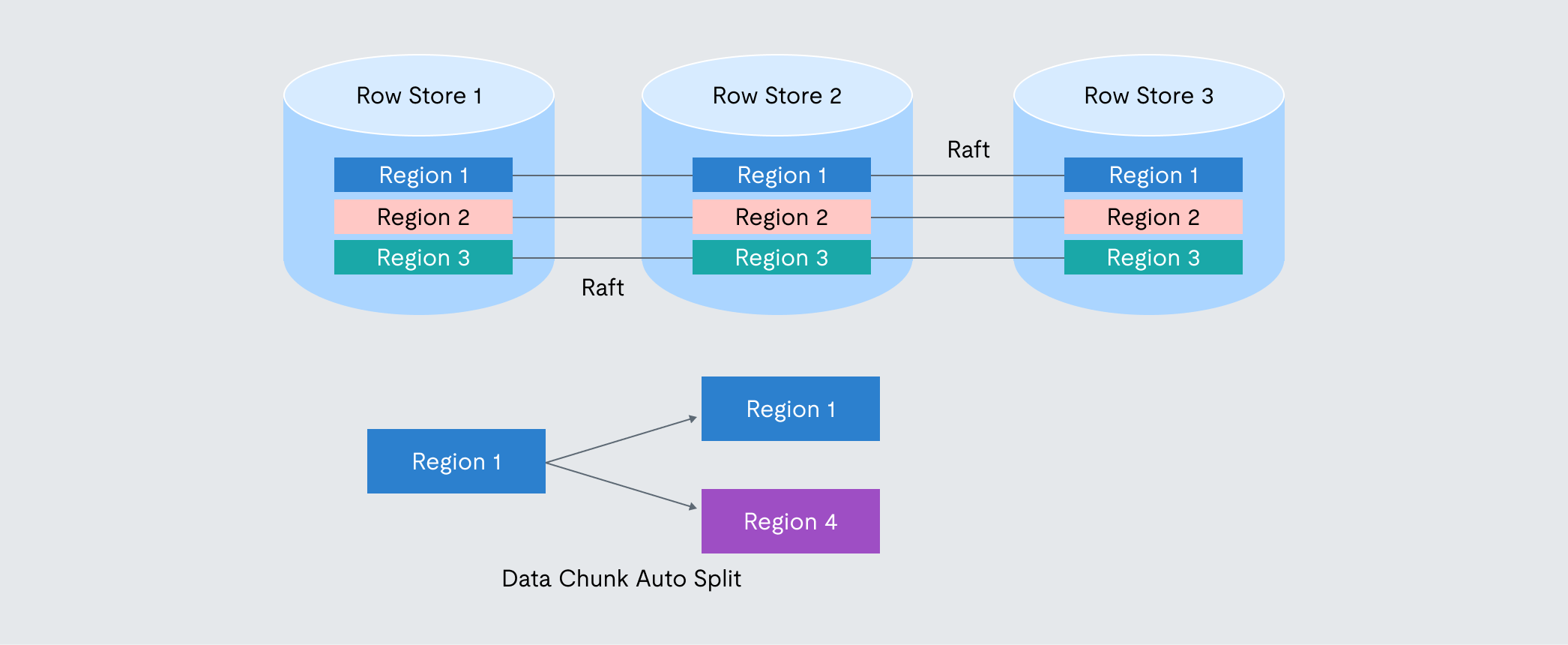
Figure 4. A diagram depicting how Raft consensus works in TiDB.
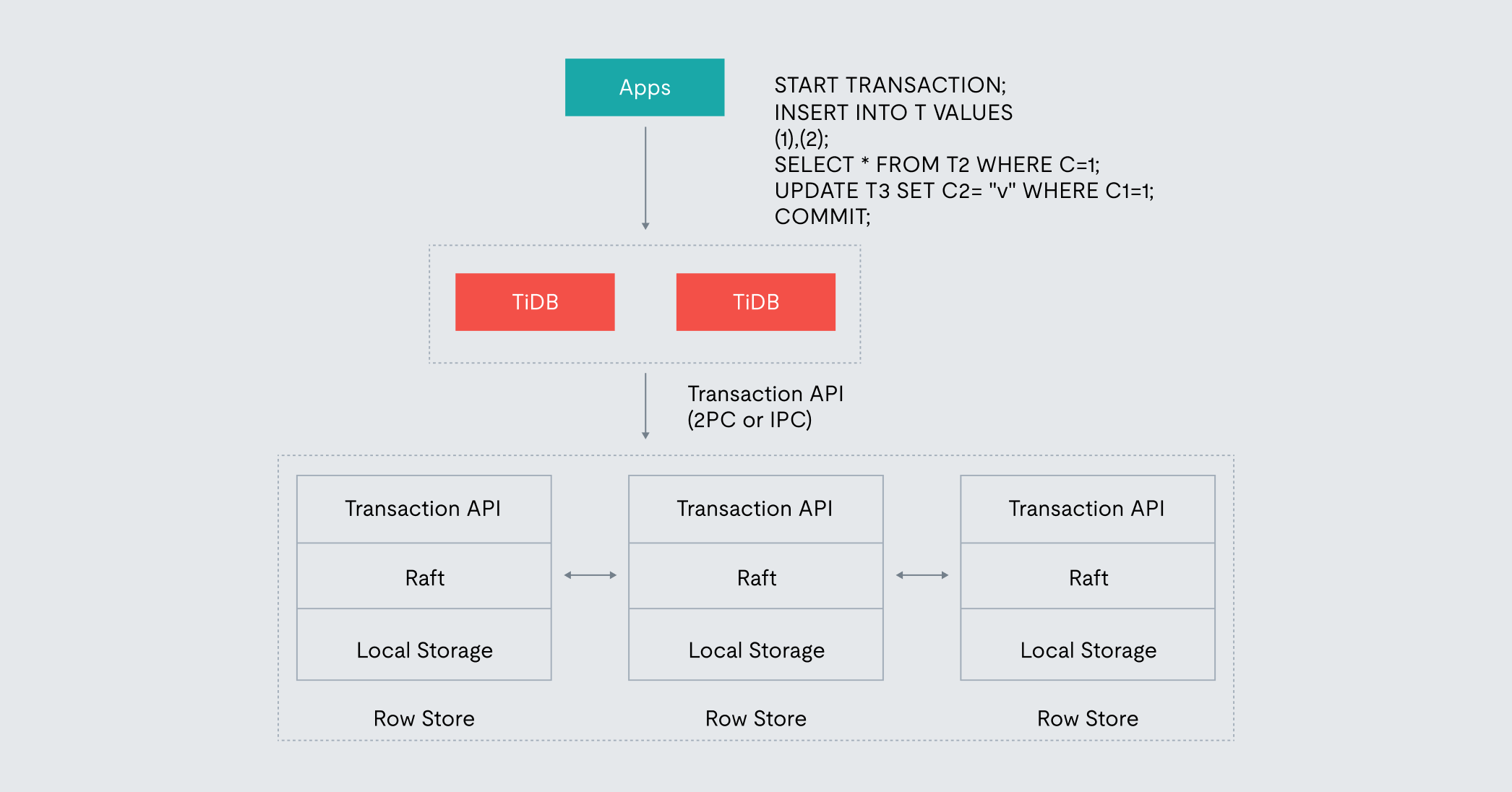
Figure 5. A diagram depicting how distributed transactions work in TiDB.
Through this distributed database architecture, TiDB directly addresses the core limitations of traditional database scaling strategies:
In essence, TiDB uses intelligent automation (primarily via the metadata and cluster orchestrator) and proven distributed systems principles (like Raft) to deliver the benefits of horizontal scaling without imposing the traditional complexities onto the user.
Not every system needs to scale the same way. Your database scaling strategies should match your product maturity, user base, and infrastructure goals. Below are three typical growth stages and how vertical vs. horizontal scaling fits into each.
In the early stages, simplicity matters. You’re optimizing for speed of development, low operational overhead, and getting to product-market fit—not building for hyperscale. Vertical scaling (i.e., upgrading to a larger instance) often provides a faster, cheaper path to support modest workloads without the complexity of distributed database architecture.
As usage climbs, the limitations of vertical scaling begin to surface. You may find yourself upgrading hardware frequently or dealing with service interruptions during maintenance. It’s at this point that architectural debt compounds, and retrofitting horizontal scalability becomes harder the longer you delay.
At scale, availability, elasticity, and global performance are no longer nice-to-haves—they’re mandatory. Vertical scaling maxes out fast, and infrastructure that can’t scale out forces brittle workarounds like manual sharding. This increases operational complexity and slows innovation.
TiDB delivers tangible benefits across demanding industries facing scaling challenges.
These successes show TiDB delivers scalability, performance, availability, and operational simplicity, making it compelling for organizations outgrowing traditional databases.

Adopting TiDB involves practical considerations like implementation, management, and TCO.
The choice between TiDB Self-Managed and TiDB Cloud balances control vs. operational cost/complexity.
TCO includes infrastructure, software, labor, and downtime costs.
When comparing TCO, consider reduced engineering effort (vs. workarounds), consolidated mixed workloads, and managed service savings.
The choice between vertical and horizontal scaling involves a trade-off between initial simplicity and long-term capability. Vertical scaling is straightforward but hits hard limits, requires downtime, creates single points of failure, and becomes costly. Horizontal scaling offers limitless potential and high availability but traditionally involves significant complexity.
TiDB bridges this gap, providing the benefits of horizontal scaling (scale up vs. scale out elasticity, fault tolerance, performance) while mitigating complexity through its intelligent distributed database architecture and automation (automatic sharding, load balancing, Raft consensus). Its MySQL compatibility eases adoption, and its mixed workload processing capability simplifies architecture and enables real-time insights.
Choosing a scalable, cloud-native solution like TiDB is a strategic investment in future-proofing data infrastructure, avoiding the limitations of vertical scaling and the burdens of manual horizontal scaling. Its proven success across demanding industries makes it a compelling option for any organization implementing Cloud database scaling or leveraging Auto-scaling databases for data-intensive applications.
Yes, many modern systems use a combination of horizontal and vertical scaling. Typically, businesses start by vertically scaling servers until reaching cost or performance limits, then move to horizontal scaling to handle additional growth efficiently. Combining both database scaling strategies offers flexibility and optimizes resource usage based on workload needs.
Vertical scaling has physical and financial limits. High-end servers become increasingly expensive, and downtime is often required for upgrades. Additionally, a single point of failure risk remains, meaning if one powerful machine goes down, the entire system may be impacted.
Horizontal scaling is ideal for cloud-native applications because it allows organizations to add or remove resources dynamically based on demand. This approach improves availability, resilience, and cost-efficiency, especially when serving global user bases or handling unpredictable traffic patterns. This is precisely what cloud database scaling aims to achieve.
Yes, TiDB is built specifically for horizontal scalability. Its distributed database architecture enables businesses to add more nodes easily without service interruption, ensuring high availability, strong consistency, and seamless performance even as workloads grow. This makes it a leading solution for scale up vs. scale out requirements.
If your application is experiencing frequent slowdowns during traffic spikes, requires global accessibility, or faces hardware limitations with vertical upgrades, it’s a strong sign that you need horizontal scaling to ensure future growth and stability. These are common indicators that your current database scaling strategies are insufficient.
Horizontal scaling introduces complexity in system management, requires specialized distributed database architecture expertise, and can face data consistency challenges across multiple nodes. Initial setup costs are typically higher, and network latency between nodes can impact performance. However, modern distributed databases like TiDB address many of these challenges through automated management and built-in consistency mechanisms.
Vertical scaling often has lower initial costs but becomes exponentially more expensive as you reach high-end hardware limits. Horizontal scaling requires higher upfront investment but offers better long-term cost efficiency through commodity hardware usage and linear cost scaling. The total cost of ownership (TCO) typically favors horizontal scaling for growing applications. This is a core consideration in database scaling strategies.
Traditional SQL databases struggle with horizontal scaling due to ACID compliance requirements, complex join operations across distributed data, and monolithic architecture designed for single-node operation. These databases rely on strong consistency models that are difficult to maintain across multiple nodes. Modern distributed SQL databases like TiDB solve this by redesigning the architecture specifically for horizontal scaling while maintaining SQL compatibility and ACID guarantees.
Choose vertical scaling when you have predictable, moderate growth patterns, simple applications that can tolerate brief downtime, limited distributed systems expertise, or when your current hardware is significantly underutilized. It’s also suitable for applications with tight data consistency requirements that are difficult to distribute.
“Scaling up” (vertical scaling) means adding more power to existing machines – more CPU, RAM, or storage. “Scaling out” (horizontal scaling) means adding more machines to your resource pool. Scaling up is like upgrading your car’s engine, while scaling out is like adding more cars to your fleet.
Auto-scaling with horizontal scaling automatically adds or removes server instances based on demand metrics like CPU usage, memory consumption, or request volume. Cloud platforms and distributed databases like TiDB can automatically provision new nodes during traffic spikes and scale down during low-demand periods, optimizing both performance and costs.